Day 321 7 hrs, 15 kms Boonsboro, where I left off last time has a cozy, almost frontierlike charm, nestled up against the wooded moutains and with a rather rustic Main Street. Here is where I'll bid a temporary farewell to the Cumberland Valley, and head over the ridge towards the east.
On my way up the hillside, I spot a stream with a waterfall down below
... even though it's early in the day, I go ahead and take a pause for reflection and to enjoy the moment. If it were later on in the day, I'd definitely go ahead and hop in for a splash. Nice to be closer to nature again, after miles and miles of towns and farmland.
At the top of the ridge is a turnoff to "Washington Monument State Park". I, as most people, think of Washington Monuent as that pointy thing between the capitol and the Lincoln Memorial in DC. But no, it's not the only one... other states also built their own memorials to our first president.
My expectations are pretty low for this one--but I decide to make a detour to take a look. I follow a road to a parking lot and museum with a footpath up to monument at the top of the ridge. Nah... the monument won't be winning any awards. It looks like a giant milk jug made out of uncut stone--something that could've been built during the stone age... No great engineering feat here.
There is a nice view of the Cumberland Valley--looks more like a vast plain than a valley, with another wooded ridge, far, far away
. In between is farmland, forest some of the towns I've visited along this hike--although they're a bit hard to make out.
Then comes the coolest part of my little side trip. I happened to have come at just the right time, when a young fellow dressed in Civil War uniform is about to put on a demonstration.
First he explains and demonstrates how signaling worked. During the Civil War, teams of signalers would relay messages from hilltop to hilltop--all the way from here to Washington, relaying vital information. From this hilltop important information was transmitted about troop movement leading to the battle of Sharpsburg.
I ask if any signal team was captured, and he says yes--but they managed to destroy their codes (which had to be changed frequently) in time.
Then he goes on to show a bit more of what life was like as a soldier, showing their daily rations--8 "hard tack" crackers (which apparently never expired, the leftover crackers, stored in tins were served to soldiers 35 years later in the Spanish American War! Also, green coffee beans were popular--which meant that the soldiers had to roast their own coffee on the road
...
Interesting how some modern day companies got a boost during this era. Goodyear? they provided the army with rubber bedmats. Nabisco? they provided the hardtack.
After the other folks leave, I ask a couple more questions--as this fellow really seems to know his stuff. "Did the soldiers do a lot of raiding to make up for the shortage of supplies?"
"Yes, this was very common--it was pretty hard for Northern farmers to get compensation after being raided. First they had to prove that it was Union troops who did it (if they were raided by the south, they got nothing) then they had to prove that they were loyal to the Union, which was often not the case in Maryland. In this area, many people lost their homes, because, after having their homes looted, they'd go into debt, then after the war, the banks would repossess their homes... The damage assessors could be some really crooked folks as well..."
So that was America's original "housing crisis"!
He continues. "When the South would raid a farm, they'd sometimes try to make it look good, by paying people in useless Confederate script
. That way they could say that they weren't actually 'stealing' from people"
Ah yes... a "gentlemen's" war...
After thinking I knew everything I wanted to know about the Civil War, this insights are actually quite fascinating. I'm going to count this as an "interesting encouter"...
So I continue on following the Appalachian trail... for 1 mile to the main road. I could just continue on south along the trail, but I've decide that the city of Frederick is worth yet another lengthy detour. Along the way I catch up with a fellow and his dog loaded with gear. No, he's not a "through-hiker", he's from Baltimore and just hiking for 3 weeks to get away from the city. Apparently he's not very interested in socializing, as he picks up the pace, I guess, to get away from me...
1829. The Original Housing Crisis
Friday, April 04, 2014
 Boonsboro, Maryland, United States
Boonsboro, Maryland, United States
Other Entries
-
151818. Approaching Gettysburg
Jan 1183 days prior Bonneauville, United Statesphoto_camera12videocam 0comment 0
Bonneauville, United Statesphoto_camera12videocam 0comment 0 -
16Post-visit: The Civil Wars that didn't Happen
Jan 1876 days prior Gettysburg, United Statesphoto_camera87videocam 0comment 0
Gettysburg, United Statesphoto_camera87videocam 0comment 0 -
171819. The White Squaw
Jan 2569 days prior Arendtsville, United Statesphoto_camera6videocam 0comment 0
Arendtsville, United Statesphoto_camera6videocam 0comment 0 -
181820. Apple Capital
Jan 2569 days prior Biglerville, United Statesphoto_camera6videocam 0comment 0
Biglerville, United Statesphoto_camera6videocam 0comment 0 -
191821. Encounters on the Appalachian Trail
Feb 0261 days prior Bendersville, United Statesphoto_camera24videocam 0comment 0
Bendersville, United Statesphoto_camera24videocam 0comment 0 -
201822. The Old Country Store
Feb 2142 days prior Mont Alto, United Statesphoto_camera9videocam 0comment 0
Mont Alto, United Statesphoto_camera9videocam 0comment 0 -
21Post-visit: Memories of 2000
Mar 0134 days prior Waynesboro, United Statesphoto_camera24videocam 0comment 0
Waynesboro, United Statesphoto_camera24videocam 0comment 0 -
221823. Hiking in the Dark
Mar 0134 days prior Smithsburg, United Statesphoto_camera6videocam 0comment 0
Smithsburg, United Statesphoto_camera6videocam 0comment 0 -
23Post-visit Hagerstown: A City Divided
Mar 0827 days prior Hagerstown, United Statesphoto_camera47videocam 0comment 0
Hagerstown, United Statesphoto_camera47videocam 0comment 0 -
241824. Singing by the River
Mar 0827 days prior Funkstown, United Statesphoto_camera5videocam 0comment 0
Funkstown, United Statesphoto_camera5videocam 0comment 0 -
251825. Crossing the Potomac
Mar 1520 days prior Williamsport, United Statesphoto_camera28videocam 0comment 0
Williamsport, United Statesphoto_camera28videocam 0comment 0 -
26Postvisit: Entering West Virginia
Mar 1520 days prior Martinsburg, United Statesphoto_camera8videocam 0comment 0
Martinsburg, United Statesphoto_camera8videocam 0comment 0 -
27Postvisit: A Thorough Exploring
Mar 2114 days prior Martinsburg, United Statesphoto_camera13videocam 0comment 0
Martinsburg, United Statesphoto_camera13videocam 0comment 0 -
281826. Spy Retirement Town
Mar 2114 days prior Shepherdstown, United Statesphoto_camera39videocam 0comment 0
Shepherdstown, United Statesphoto_camera39videocam 0comment 0 -
291827. The Bloodiest Day in American History
Mar 287 days prior Sharpsburg, United Statesphoto_camera37videocam 0comment 0
Sharpsburg, United Statesphoto_camera37videocam 0comment 0 -
301828. A Time for Reflection
Mar 287 days prior Keedysville, United Statesphoto_camera5videocam 0comment 0
Keedysville, United Statesphoto_camera5videocam 0comment 0 -
311831. Back on the C & O Canal
Apr 013 days prior Brunswick, United Statesphoto_camera15videocam 0comment 0
Brunswick, United Statesphoto_camera15videocam 0comment 0 -
321829. The Original Housing Crisis
Apr 04 Boonsboro, United Statesphoto_camera14videocam 0comment 0
Boonsboro, United Statesphoto_camera14videocam 0comment 0 -
331830. Middletown Historical Society
Apr 04later that day Middletown, United Statesphoto_camera24videocam 0comment 0
Middletown, United Statesphoto_camera24videocam 0comment 0 -
34Post-visit: Approaching the Megalopolis
Apr 117 days later Frederick, United Statesphoto_camera48videocam 0comment 0
Frederick, United Statesphoto_camera48videocam 0comment 0 -
35Post-visit: The Overlook
Apr 117 days later Harpers Ferry, United Statesphoto_camera47videocam 0comment 0
Harpers Ferry, United Statesphoto_camera47videocam 0comment 0 -
361832. A Swim in the Shenadoah
Apr 117 days later Bolivar, United Statesphoto_camera15videocam 0comment 0
Bolivar, United Statesphoto_camera15videocam 0comment 0 -
371833. Meeting a Stereotypical West Virginian
Apr 2420 days later Ranson, United Statesphoto_camera15videocam 0comment 0
Ranson, United Statesphoto_camera15videocam 0comment 0 -
38Post-visit : Goodbye West Virginia
Apr 2521 days later Charles Town, United Statesphoto_camera9videocam 0comment 0
Charles Town, United Statesphoto_camera9videocam 0comment 0 -
391834. Entering The South
Apr 2521 days later Berryville, United Statesphoto_camera14videocam 0comment 0
Berryville, United Statesphoto_camera14videocam 0comment 0 -
40Post-visit: A True Virginian Town
May 0329 days later Winchester, United Statesphoto_camera21videocam 0comment 0
Winchester, United Statesphoto_camera21videocam 0comment 0 -
411836. Living in a Log House in the 21st Century
May 0329 days later Stephens City, United Statesphoto_camera10videocam 0comment 0
Stephens City, United Statesphoto_camera10videocam 0comment 0 -
421837. The Unitarian Universalist Church
May 0329 days later Middletown, United Statesphoto_camera11videocam 0comment 2
Middletown, United Statesphoto_camera11videocam 0comment 2 -
431838. The Great Train Raid
May 0430 days later Strasburg, United Statesphoto_camera16videocam 0comment 0
Strasburg, United Statesphoto_camera16videocam 0comment 0 -
441839. A Good Stopping Point
May 0430 days later Toms Brook, United Statesphoto_camera7videocam 0comment 0
Toms Brook, United Statesphoto_camera7videocam 0comment 0 -
451840. Strumming by the river
Jul 0188 days later Marysville, United Statesphoto_camera4videocam 0comment 0
Marysville, United Statesphoto_camera4videocam 0comment 0 -
46Post-visit: Remembering Nathan's Bar
Jul 0188 days later Enola, United Statesphoto_camera6videocam 0comment 0
Enola, United Statesphoto_camera6videocam 0comment 0 -
471841. Riverfront Town
Jul 0188 days later Wormleysburg, United Statesphoto_camera9videocam 0comment 0
Wormleysburg, United Statesphoto_camera9videocam 0comment 0 -
481839. Respected Hobos
Jul 0188 days later Duncannon, United Statesphoto_camera22videocam 0comment 0
Duncannon, United Statesphoto_camera22videocam 0comment 0 -
49Postvisit: A sunrise or a sunset?
Jul 0491 days later Harrisburg, United Statesphoto_camera148videocam 0comment 0
Harrisburg, United Statesphoto_camera148videocam 0comment 0 -
501846. Another disappointing Suburb
Jul 0491 days later Penbrook, United Statesphoto_camera1videocam 0comment 0
Penbrook, United Statesphoto_camera1videocam 0comment 0

 Boonsboro, Maryland, United States
Boonsboro, Maryland, United States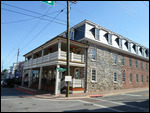
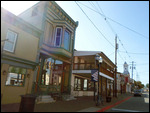
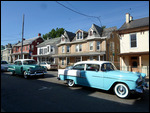
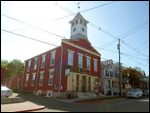

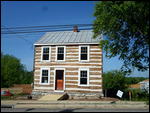
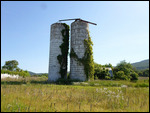
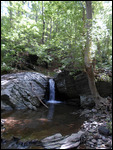
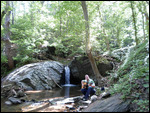
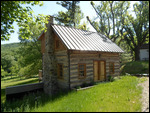
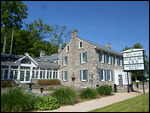
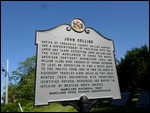


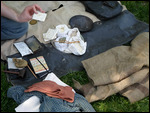
2025-05-22